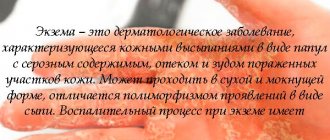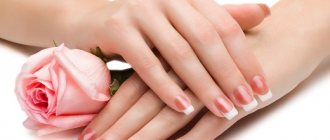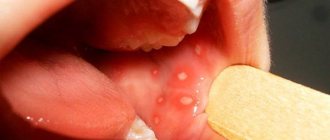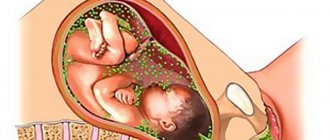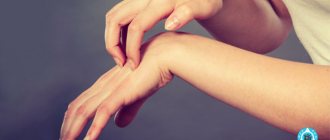Causes of chronic eczema
Normally, the skin is resistant to most irritants. But in some situations, due to internal factors, neurohumoral and immune reactions are disrupted towards their hyperreactivity. It has not yet been established exactly why, under the same conditions, this happens to some people and not to others. But as a result, if pathologies occur in the immune system, the skin begins to react to irritations in a completely different way.
This leads to:
- chronic diseases of internal organs;
- endocrine disorders;
- systematic and acute stress;
- regular overwork;
- frequent infectious diseases;
- predisposition to atopy and allergies;
- acute and chronic intoxication of the body (including smoking and drinking alcohol);
- hypothermia;
- lack of vitamins;
- helminthic infestations;
- hereditary predisposition, etc.
Intrinsic factors lead to changes in immune responses. And external ones directly cause a pathological response in the skin. These include:
- various allergens (food, chemical, pollen, animal hair, etc.);
- caustic and chemical substances (including cosmetics, medicines and household chemicals);
- hypothermia of the skin;
- sunburn, etc.
Exacerbation of chronic eczema can be caused not only by external factors, but also by internal ones - relapse of diseases of internal organs, colds, stress, etc.
Clinical picture of chronic eczema
Chronic eczema is characterized by an undulating course - periods of remission are replaced by relapses and vice versa.
During an exacerbation, itchy blistering rashes appear on the red-bluish skin. After opening them, a weeping, painful surface with cracks filled with serous content remains. Gradually, the affected area becomes covered with crusts and scales. But then new bubbles appear. Thus, with this disease, various elements of the rash can be observed simultaneously. This phenomenon is called false polymorphism and is characteristic of eczema.
What rashes with this disease look like on the hands is clearly demonstrated in the photo below.
With proper treatment, the skin gradually clears of scales and crusts. But in a chronic course, it becomes denser (lichenized) over time and acquires a stagnant red-blue color. Even during periods of remission, the affected areas often peel and itch.
When a bacterial or fungal infection is added in the acute phase, the clinical picture of eczema may change. Serous exudate is replaced by purulent discharge. The crusts and scales, instead of white-yellow, become dirty yellow with an unpleasant color and odor. With large affected areas, patients' temperature rises and their general well-being suffers. But with treatment with antibiotics or antifungal agents (depending on the nature of the infection), all symptoms stop fairly quickly.
Types of chronic eczema
The simplest type of chronic course of this disease is occupational eczema. It occurs as a result of regular exposure to irritating substances during the patient’s work activities. It can be treated, sometimes quite successfully, but due to constant contact with the provoking factor, exacerbations will occur again and again. But changing jobs most often allows you to get rid of this disease forever.
The second common form of chronic eczema is lichenified. It is characterized by significant compaction and coarsening of the lesions, which do not disappear even without exacerbations. This type most often occurs on the hands, elbows, knees, feet and neck.
Dyshidrotic eczema often occurs on the hands and feet. It manifests itself as moist, itchy rashes with small blisters that tend to grow.
A rather rare type of chronic eczema is coin-shaped. It got its name due to the small round-shaped lesions.
Chronic eczema may appear only in winter and disappear completely in summer. This look is more typical for older people with thin, dry skin. The lesions in this case have unclear boundaries, are resistant to treatment, but under the influence of sunlight in the warm season they resolve on their own. Therefore, this form is called winter eczema.
Seborrheic eczema often becomes chronic. It is localized in areas rich in sebaceous glands (nose, forehead, cheeks, scalp, skin behind the ears, etc.). It appears as large white-yellow scales and crusts similar to dandruff.
Chronic eczema also includes its varicose form. This disease occurs with varicose veins and most often affects the skin of the lower extremities. In the occurrence of this type, the main role belongs to circulatory disorders in this area and disturbances in the trophism of surrounding tissues. Treatment of such eczema must begin with the treatment of vascular pathologies, otherwise it will be almost impossible to achieve a lasting result.
Treatment of chronic eczema
If eczema occurs, you should never self-medicate. This will lead to the development of a protracted process and increase the risk of complications. For any itchy, weeping rash on the skin, you need to make an appointment with a dermatovenerologist. He will not only make the correct diagnosis and prescribe treatment, but will also explain in detail what chronic eczema is and how to avoid its relapses in the future.
Therapy for this disease is carried out using local agents, systemic drugs and physical therapy.
Local treatment of eczema
Since the manifestations are localized on the skin, it is logical to begin treatment by applying drugs directly to the lesions. For this use:
- antiseptic solutions (Resorcinol, Octenisept, Furacillin, etc.) for the purpose of preventing infectious infections and for cleansing before applying medications;
- hormonal external preparations (Advantan, Dermovate, Celestoderm, Lorinden, etc.);
- drying agents (talks and ointments with zinc, tar, salicylic acid);
- softening and regenerating creams and balms (Radevit, Cycoplast, Emolium, etc.).
In some cases, dermatologists write prescriptions for the preparation of medicines in pharmacies with individual compositions, depending on the clinical picture in each specific case.
Moisturizers and emollients are recommended to be used during remission. Their use, among other things, serves to prevent exacerbations.
Systemic treatment for eczema
In mild cases, local treatment is sufficient to get rid of the rash. But systemic therapy is often required. For this purpose the following is prescribed:
- intravenous desensitizing agents to reduce the body's sensitivity to allergens (sodium thiosulfate, calcium thiosulfate, calcium chloride, etc.);
- antihistamines in tablets (Suprastin, Zyrtec, Claritin, etc.);
- hormonal drugs in tablets (Dexamethasone, Triamcinolone, Polcortolone, etc.);
- vitamins (A, E, C, group B, folic acid, etc.);
- sedatives (Persen, Afobazol, Tenoten, Novopassit, etc.);
- if an infection occurs, take antibacterial and antifungal drugs as indicated.
If the patient is in a severely nervous state, the doctor may recommend that he consult a psychotherapist with the prescription of antidepressants or tranquilizers. Staying calm is an important point in preventing exacerbations of chronic eczema, as stress provokes frequent relapses.
Physiotherapy for chronic eczema
Physiotherapy has proven itself in the treatment of exacerbations of chronic eczema and their prevention. Therefore, dermatologists often prescribe:
- electrophoresis with antihistamines;
- darsonvalization;
- hydrotherapy (radon, mineral, sulfide, tar baths);
- cryotherapy;
- paraffin therapy;
- ultraviolet irradiation, etc.
For patients with frequent relapses of chronic eczema, spa treatment is recommended once a year, or preferably twice.
Folk remedies in the fight against acute dermatosis
In combination with medicinal effects on the disease, folk remedies can also be used. Their use at the healing stage helps speed up natural regeneration processes, restore the body and strengthen the immune system. In addition, supporters of alternative medicine claim that alternative treatment is safer because it does not contain any chemistry. Often, practice confirms the falsity of this judgment: while arbitrarily trying to cure eczema with the help of homemade decoctions and tinctures, patients are faced with an unexpected allergic reaction to certain components and, as a result, deterioration in well-being. Therefore, before using medicinal formulations prepared at home, it is better to consult a doctor.
In addition, it is also wrong to believe that folk recipes can serve as a full-fledged replacement for conservative treatment during an exacerbation of eczema. The effectiveness of home remedies is more noticeable when used in combination with traditional medicines.
The following recipes are popular:
- A decoction of their burdock root . To prepare a remedy that you will need to drink half a glass twice a day, you will need 2 tbsp. l. dried crushed raw materials. Pour 1 liter of boiling water over the dry mass and let it brew for several hours. Then you need to boil the resulting broth and leave to cool. Strain and drink for 2 weeks.
- Decoction of lemon balm and St. John's wort . In equal quantities, 1 tsp. Take both components, pour two glasses of boiling water and let it brew for 30 minutes. Drink 250 ml as tea in the morning on an empty stomach, and in the evening before bed.
- Carrot compress . Squeeze the juice out of a fresh vegetable, dip gauze in it and apply to the affected areas. The procedure can be repeated several times throughout the day.
- Ointment made from sour cream and carrot pulp . To prepare a homemade composition for external use, you will need low-fat sour cream or homemade cream (3 tbsp.), 1 tbsp. l. honey and finely grated carrots. Mix everything thoroughly and apply to the affected areas. It is not recommended to use the product for weeping eczema.
- Vegetable oils . In order to get rid of itching and relieve redness, to moisturize the skin if it is excessively dry, you will need sea buckthorn or olive oil. It is enough to wipe the epidermis with it several times throughout the day.
Prevention of exacerbations of chronic eczema
If chronic eczema occurs, you will need to change your lifestyle quite radically in order to reduce the number of exacerbations to a minimum. Necessary:
- normalize your diet by eliminating all harmful foods;
- maintain an active lifestyle, play sports;
- carry out hardening;
- take vitamin courses;
- avoid colds;
- treat diseases of internal organs in a timely manner;
- use only high-quality hypoallergenic cosmetics;
- interact with household chemicals only with gloves;
- use protective creams from the sun and frost.
Compliance with these recommendations will ensure overall strengthening of the body and local protection of the skin, which will avoid frequent relapses of eczema.
Diet
The development of chronic eczema requires a special diet. It is necessary to include in the diet foods rich in vitamins and minerals - fruits, vegetables, or take special vitamin complexes.
For eczema, a gentle diet is necessary - dairy-vegetable. The following products must be present in the diet:
- Porridge.
- Meat – lean, preferably boiled.
- Poultry – turkey, chicken.
- Fish.
- Vegetables – stewed or boiled (tomatoes, carrots, cucumbers, zucchini).
- Fruits – apples and others that do not cause allergies.
- Greens – they are rich in vitamins and promote better digestibility.
- Products made from durum wheat (pasta, bran bread).
- Natural juices.
- Green tea.
The diet involves excluding from the diet or limiting the consumption of the following foods:
- Alcohol.
- Fat.
- Spicy.
- Salty.
- Mushrooms.
- Chocolate.
- Bakery products, cookies, cakes.
- Honey.
- Citrus fruits, strawberries.
- Coffee, cocoa, carbonated drinks.
Chronic eczema and military service
Although eczema is not contagious or a severe pathology, it is one of the dermatological diseases for which complete exemption from military service is possible. In case of rare exacerbations, such service is possible, but with restrictions - not in all branches of the military. With frequent relapses, the patient becomes completely unfit to perform military duties. You can get such an entry on your military ID if chronic eczema worsens at least once in the last three years. Of course, a case of relapse must be confirmed by an entry in the medical history or outpatient card.
Chronic eczema is a non-life-threatening disease. But having arisen once, it can remind you of itself at any moment in life. Most often, it is characterized by regular exacerbations and a long course. Therefore, timely prevention and correct treatment tactics are important conditions for maintaining a comfortable quality of life for many years.
Diagnostic methods
The appearance of any skin disease requires contacting a dermatologist. After all, only a specialist can distinguish eczema from other skin diseases, such as atopic dermatitis and neurodermatitis.
First of all, the doctor examines the condition of the patient’s skin and collects a complete medical history. Additional examinations may be needed:
- allergy tests;
- detection of infections;
- establishing the general state of the immune system.

